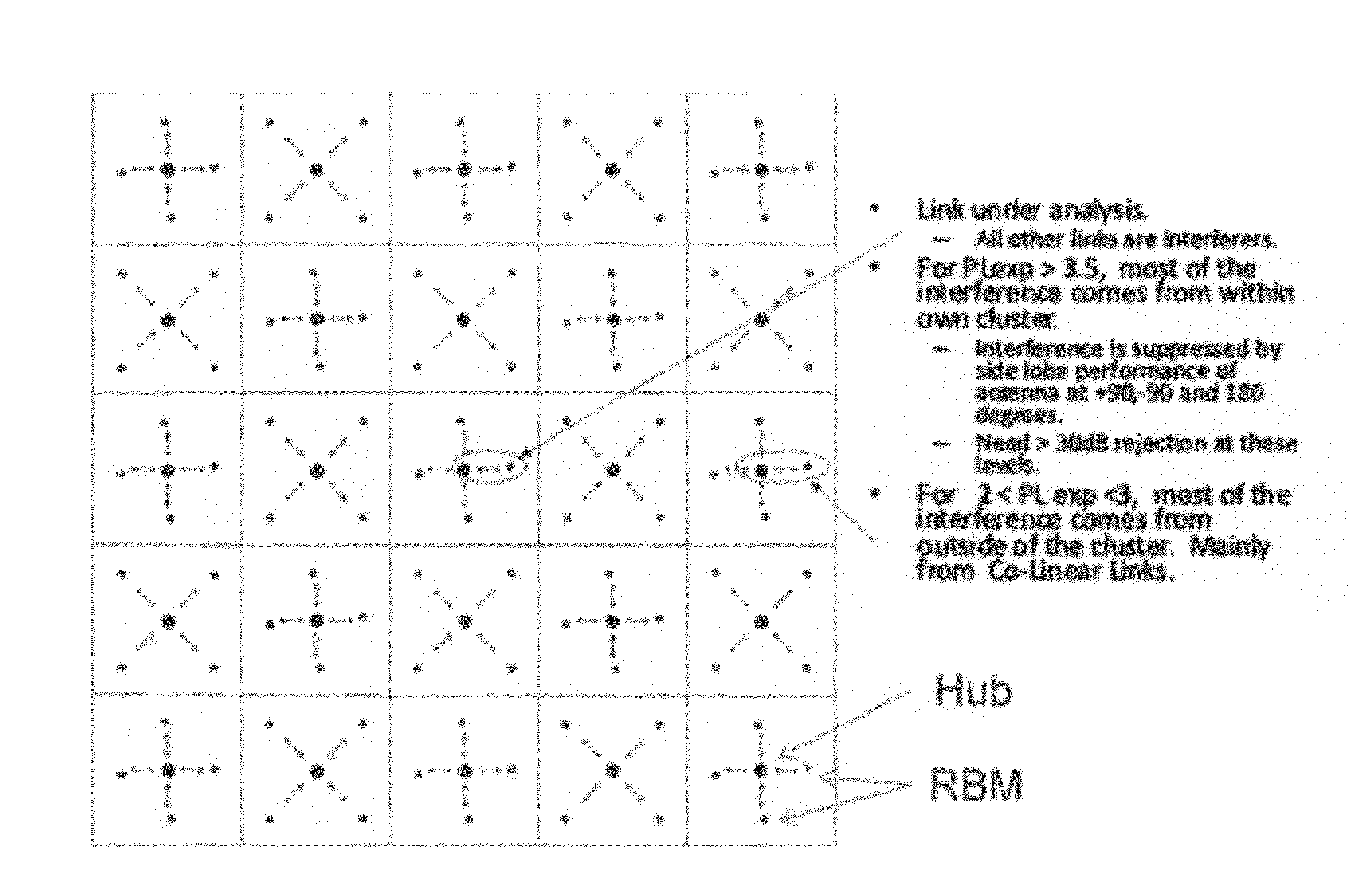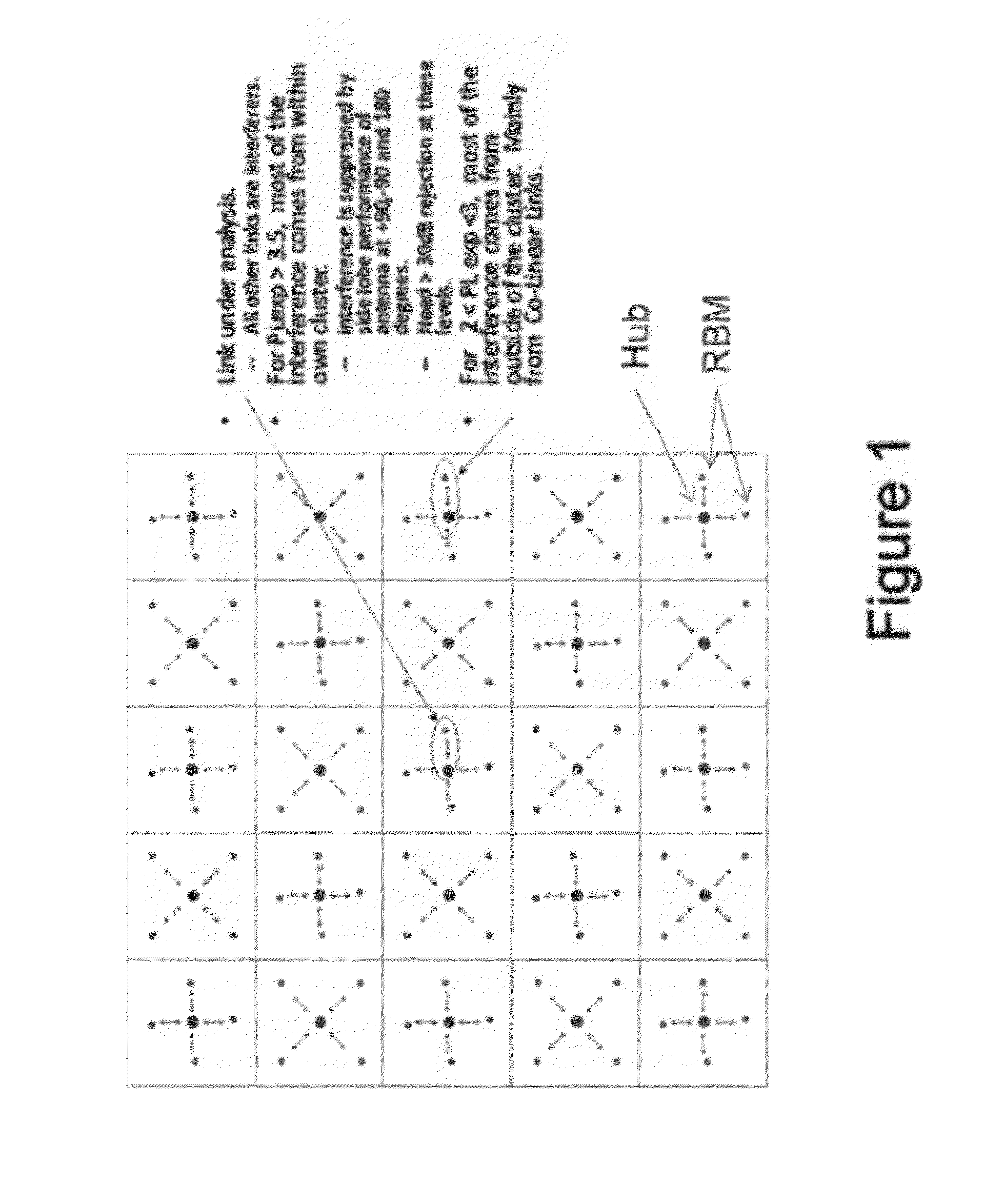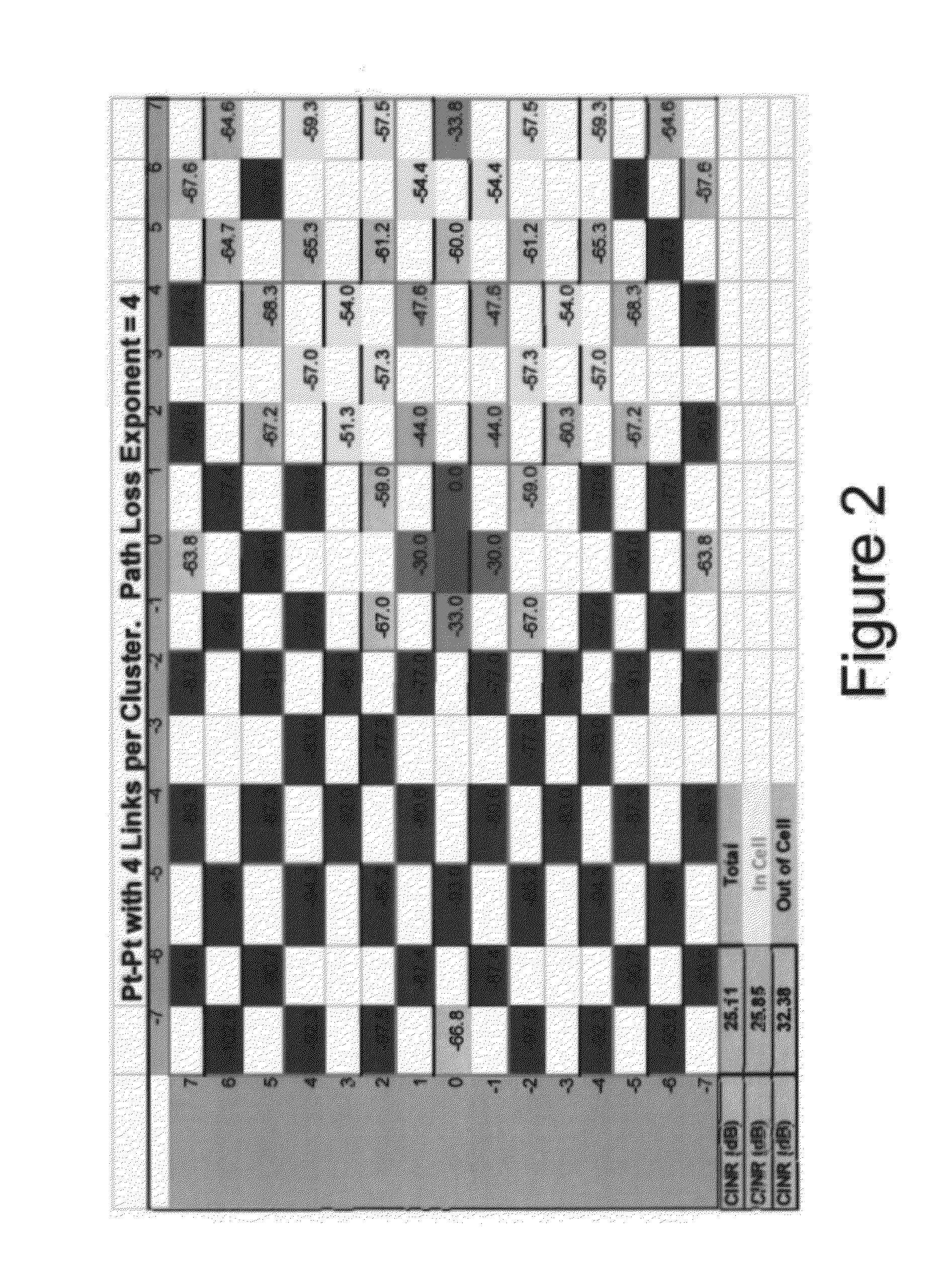System and Method for Co-Channel Interference Measurement and Managed Adaptive Resource Allocation for Wireless Backhaul
a wireless backhaul and cochannel interference technology, applied in the field of wide area wireless data networks, can solve the problems of high implementation cost, sudden increase in total traffic volume, and inability to effectively deploy network resources, and achieve the effect of reducing one or more disadvantages
- Summary
- Abstract
- Description
- Claims
- Application Information
AI Technical Summary
Benefits of technology
Problems solved by technology
Method used
Image
Examples
Embodiment Construction
[0051]FIG. 1 illustrates schematically a wide area wireless backhaul communications network comprising a plurality of nodes (N), each comprising a cluster of a Hub (H) and associated Remote Backhaul Modules (RBM), arranged in a grid, which will be used to illustrate systems and methods, according to embodiments of the present invention, for measurement of co-channel interference, control of CINR, and managed adaptive resource allocation. In particular, a novel NLOS backhaul solution is presented, which is capable of providing a cost effective, high capacity, backhaul connection from a Base Station (e.g. a Microcell or PicoCell) to a common aggregation point.
[0052]As represented in FIG. 1, each cell of the grid comprises a cluster of a hub (H) and a number of Remote Backhaul Modules (RBM). The larger, blue dots represent Hubs while the smaller red dots represent remote backhaul modules. In this example, a cluster comprises one Hub and 4 remote backhaul modules. In a real deployment, ...
PUM
 Login to View More
Login to View More Abstract
Description
Claims
Application Information
 Login to View More
Login to View More - R&D
- Intellectual Property
- Life Sciences
- Materials
- Tech Scout
- Unparalleled Data Quality
- Higher Quality Content
- 60% Fewer Hallucinations
Browse by: Latest US Patents, China's latest patents, Technical Efficacy Thesaurus, Application Domain, Technology Topic, Popular Technical Reports.
© 2025 PatSnap. All rights reserved.Legal|Privacy policy|Modern Slavery Act Transparency Statement|Sitemap|About US| Contact US: help@patsnap.com



